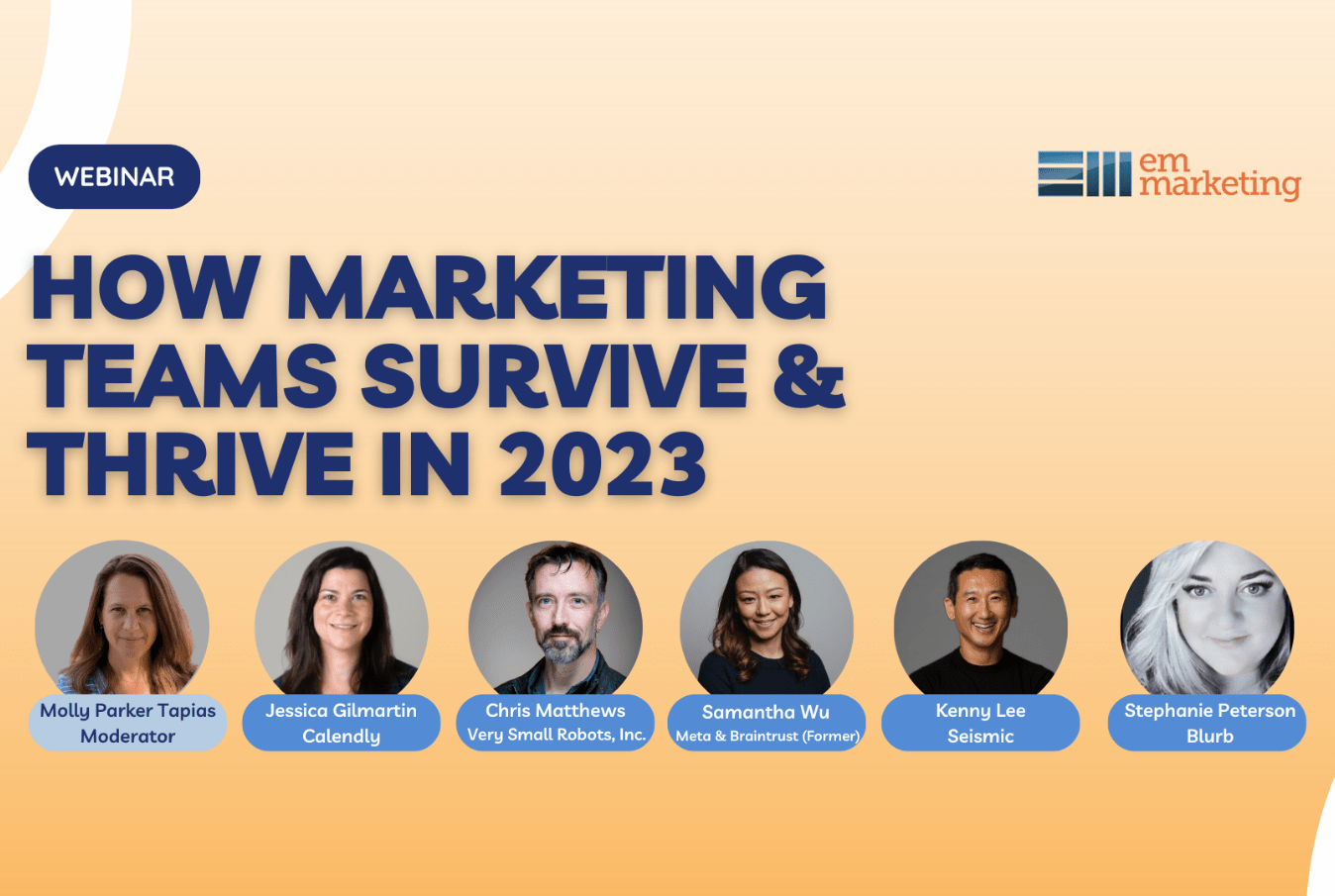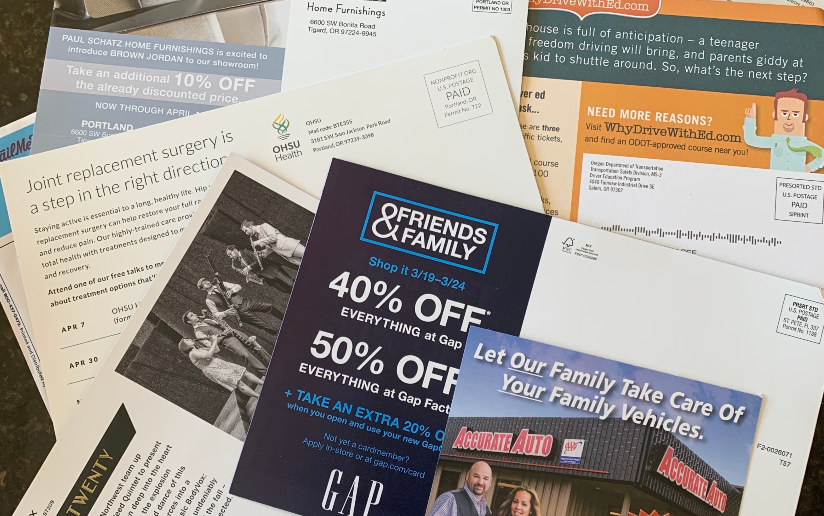
7 Best Practices for Account Based Marketing
As a B2B marketer, you likely already know that Account Based Marketing (ABM) is growing in popularity, and for good reason. Over 80 percent of marketers that measure ROI say ABM initiatives outperform other marketing strategies, often by a large margin, according to a survey by the Information Technology Services Marketing Association (ITSMA).
So why do organizations struggle with ABM campaigns? It’s often because their expectations are informed by their experience with traditional lead gen campaigns. However, there are some important differences. As Mark Ogne, founder of ABM Consortium, writes, “ABM isn’t a new superset of channels; it’s an element of everything you do, for a limited subset of companies.” The keys to success are understanding the differences, adjusting your expectations accordingly, and then applying the right tools and resources. Here are seven best practices to help you get started.
1. Keep running your lead gen campaigns.
Running a traditional marketing campaign to acquire leads and contacts through some combination of inbound and outbound marketing activities is the defacto standard in demand generation. Most organizations have already invested significantly in acquiring tools and talent to execute these types of campaigns, and have spent years optimizing these practices to reduce cost and increase efficiency.
These campaigns can and do work reasonably well. However, the conversion rate is usually in the single digits. That means a healthy pipeline requires a large number of prospects at the top of the funnel to get a few customers that are interested in purchasing your products and services. It’s like purse-seining — deploying a large wall of netting around an entire section of the ocean in order to catch a few of the kind of fish you want.
Most organizations have got their purse seining game down cold, and they should continue with it. ABM is a different way to catch fish.

2. Get started with ABM.
Traditional lead gen campaigns look at the attributes of individual contacts in the marketing database, such as job title, industry, and online behavior. The goal is to reach, engage and build relationships with leads through various channels (email, social, webinars, etc.). Using marketing automation tools, these engagements are scored and assigned to sales when the lead meets certain criteria.
ABM differs in that we begin by looking at accounts (companies) and then work toward finding the most suitable contacts within them. This approach puts the early focus on account level attributes such as product fit, intent to purchase and engagement metrics. It’s more like spear fishing — figuring out where a particular type of fish is likely to be found, and then going after it in a much more targeted manner.
It’s time for organizations to start working on their spear fishing operation, learning how to hunt and track larger species and set up targeted strikes. It requires more preparation and patience than inbound campaigns, but once you get good at it, the payoff will be worth it. These two practices should run in parallel, now and for the foreseeable future.

3. Align your sales and marketing departments.
For any ABM campaign to succeed, you must get sales and marketing to align and agree to roles and responsibilities.
You might think this would be a given, but there are frequently significant gaps. These are often caused by mistaken perceptions or misaligned expectations. Additionally, sales and marketing often define success differently. For example, marketing could define success as the number of Marketing Qualified Leads (MQL) and Sales Accepted Leads (SAL) they generate, whereas their counterparts in sales could define success as the number of sales activities that move leads towards conversion to pipeline.
When it comes to running traditional demand gen campaigns, the transition from one team to another is pretty clearly delineated, therefore creating a perceived separation of responsibilities and objectives. This can allow marketing and sales to function in silos and still meet their separate objectives.
ABM turns this process on its head. Instead of running campaigns to find leads who may be interested in your product and services, ABM starts by finding accounts (companies) that can benefit from the company’s solutions and are actively looking to buy before any campaign even begins.
Discovering and selecting the right accounts, understanding their org charts and the role of each decision maker, scoring accounts and creating a thoughtful and targeted campaign requires the skill sets of both marketing and sales. Simply stated, this new relationship must be both intentional and completely aligned to maximize the ROI of your ABM program.
4. Create your Ideal Customer Profile.
Before you run an ABM campaign, start by creating one or more Ideal Customer Profiles (ICP). This is an exercise in which you identify the common characteristics of existing customer accounts that get the most benefits from your products or services.
Doing business with these accounts results in shorter sales cycles, larger average deal sizes, higher than average customer retention rates and more advocacy for your brand. Although these companies are the big fish you are after, finding them is a harder exercise for two reasons:
- First, a larger set of data is required in order to build a clear picture of potential accounts in the target zone. This might include data points such as industry/vertical, employee headcount, size of their customer base, revenue, budget, technology platforms in use, and even funding stage and timing if you’re selling to startups and SMEs.
The best way to acquire this information is to use sales and marketing intelligence platforms such as DiscoverOrg, Dun & Bradstreet, or TechTarget, among others. These provide firmographic information (like demographic information on a person, but for companies) and even technographic information–information on their technology stack. - The second reason is that the analytic requirements of account selection and targeting are more sophisticated. You have to collect and analyze information about an account’s propensity to buy (or intent to purchase) and assign a score based on different factors. The goal of this exercise is to find the answer to the following questions:
- Is this account in market? Are they looking for a solution to a problem we can solve?
- Is this account engaged? Are they interacting with our company and actively consuming our content?
5. Score your accounts based on Fit + Intent + Engagement.
Account scoring is more nuanced than lead scoring.
In the lead generation practice, once a lead reaches a specific score through high-value interactions, it’s considered qualified and the contact is passed along to sales to pursue.
In ABM, a single qualified lead is not enough to qualify the entire account. According to Harvard Business Review, the number of stakeholders involved in purchasing decisions has climbed from an average of 5.4 two years ago to 6.8. Clearly, you need more than one engaged decision maker.
The ABM approach to scoring an account is based on Fit + Intent + Engagement:
- Fit is relatively simple. Once a list of potential accounts are identified, they can be given a fit score based on how closely each account matches the ICP.
- Intent data shows what people at target companies are searching for on the internet–not just your website. For example, searching for keywords related to your products and services can indicate a “medium” level of intent while filling out a form on your website signals a “high” level of intent to buy.
- Engagement measures all activities by people at the account. Not all activities are equally valuable, so marketing and sales need to decide which of the activities are better indicators of intent and should be given a higher score.
This level of tracking, analysis and scoring accounts requires better technology, diverse data sets and the expertise to stitch all of it together.
6. Build personalized content for each decision-maker.
One of the goals of ABM is to reach decision-makers and C-Level executives with personalized content. But these people are difficult to reach because they are extremely busy, saturated with emails, and are highly skeptical of over-the-top claims of solution providers.
To break through, marketers will need to show that they really know their industry, as well as the various players in the market. They have to be ready to educate multiple stakeholders about company’s products and services, in a way that speaks to the pain points of each stakeholder.
This is why the number-one challenge with ABM is scaling. That takes more data, more content and more human effort, and costs more money, so you’re probably going to have to prioritize, especially when you’re just getting started. This can seem daunting, so start small.

For example, let’s say that your ABM account selection process has generated 100 accounts. Through the scoring process, you’ve identified ten accounts that fall into the “best” fit category. Another 70 accounts are listed as “better” fit and the remaining 20 as “good.” It makes sense to prioritize the best fit accounts for the full personalized content and advertising treatment initially, taking a more generalized approach with the good and better fit accounts until such time as you can take on more.
This level of personalization can only be achieved with a unified and integrated approach to content marketing, advertising, social media, direct mail and events. That begins with the marketing team and is elevated by their partners in sales through follow ups at critical touch points for the ultimate customer experience that ABM promises to deliver.
7. Understand the state of ABM technology.
Most industry experts agree that CRM and Marketing Automation Platform (MAP) tools are mature technologies that provide robust support for today’s lead generation campaigns. However, the same cannot be said about today’s ABM platforms and tech ecosystem.
Among ABM platform providers, “breadth of capabilities and analytics quality are the biggest differentiators in the market” according to The Forrester New Wave™: ABM Platforms, Q2 2018.
In other words, there are some good point solutions out there, but there are not currently a lot of tools connecting intent data, advertising and personalization capabilities to create an end-to-end automated workflow. Although there are ample signs that CRM and MAP incumbents are working towards integrating some of these components into their solutions, currently a combination of external tools and agencies are required to execute a complete ABM campaign.
The bottom line
It was only a few years ago that marketers were consumed by thinking about inbound marketing processes and technologies to improve on lead generation and conversion rates. It took a few years but technologies matured and processes got better. Now it is hard to find a business that does not have an MAP-CRM integration and a demand gen program.
ABM is on the same trajectory. It’s not a fad. It’s a serious discipline that will take its place alongside inbound marketing as a foundational program. Early adopters have gained know-how and momentum by experimenting with various components of ABM and omni-channel campaigns and are now looking to scale beyond the first few target accounts.
The long-term vision is the ability to take scoring inputs and automate the “next best action” to deliver personalized and orchestrated experiences at scale. But until we get there, current and emerging technologies based on predictive analytics, artificial intelligence and curated streaming content are already helping companies to break through the noise and engage with high-value contacts in more effective and efficient ways than ever before.
Considering the long-term potential, there is no reason to keep sitting on the sidelines. ABM is the long game of demand gen; it’s not a program you can stand up overnight. If you are thinking about launching your first ABM campaign, remember that the old adage about learning to crawl, walk and then run still applies.




































